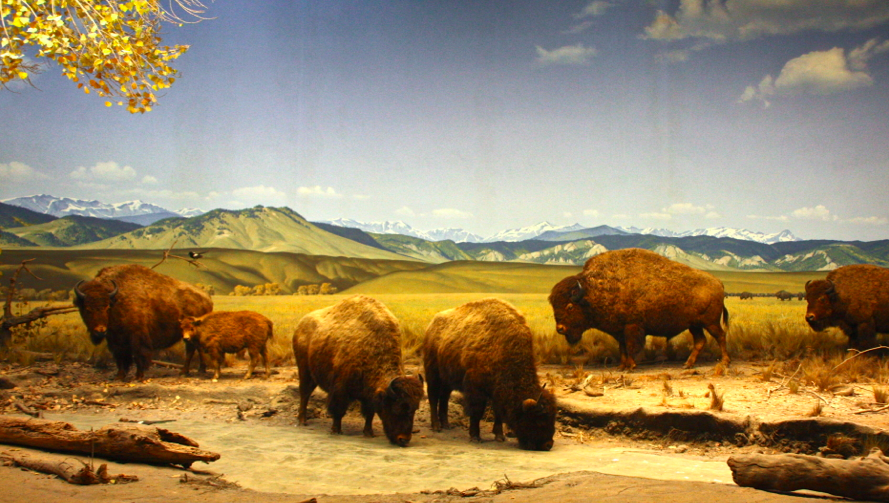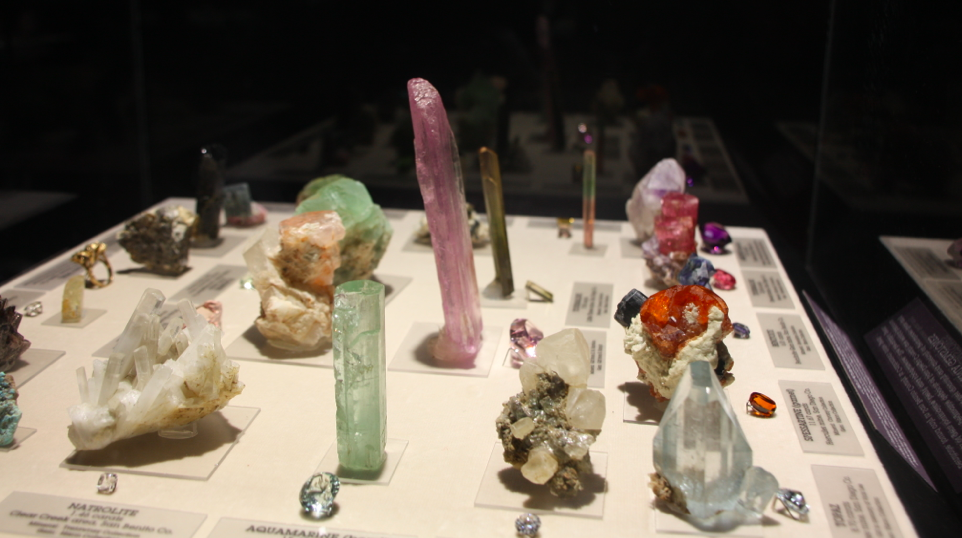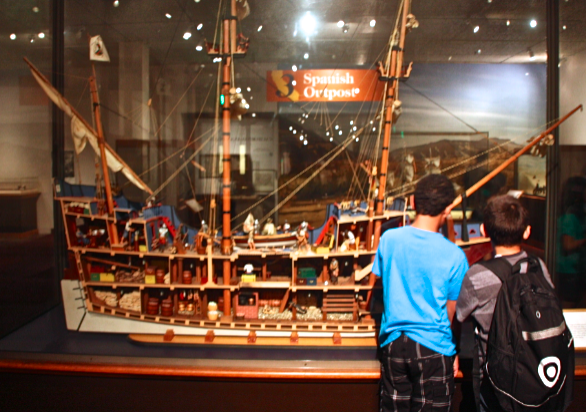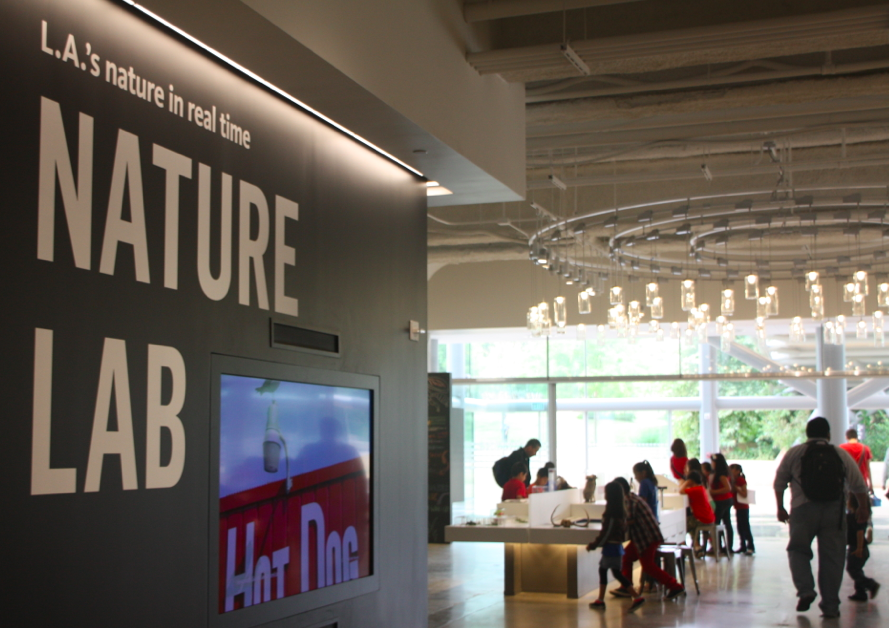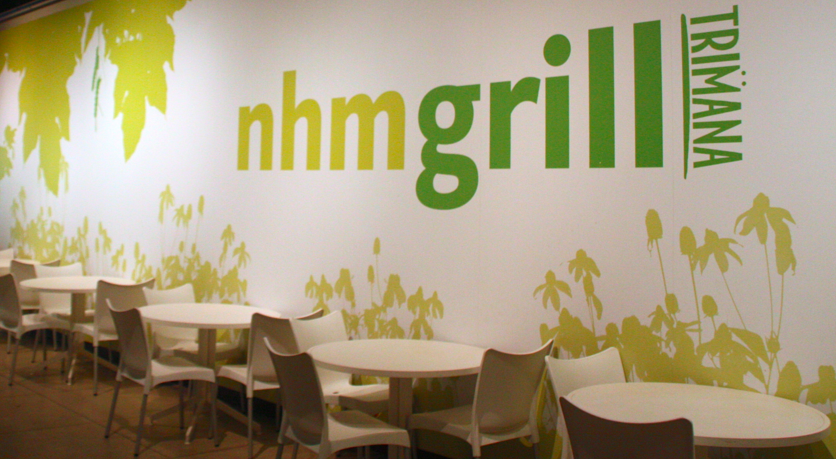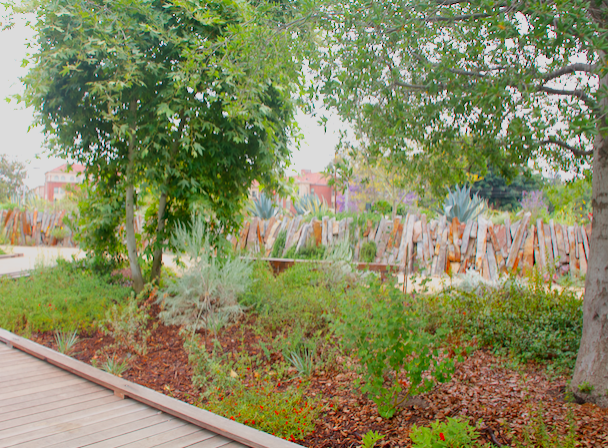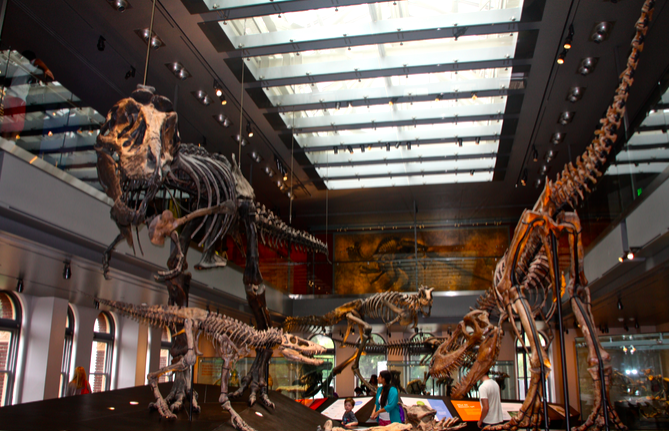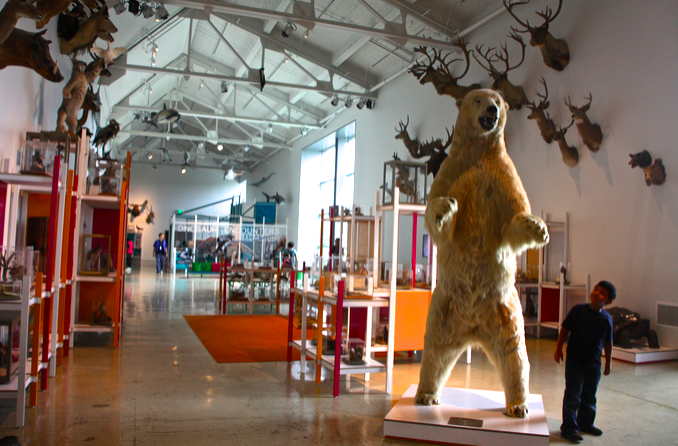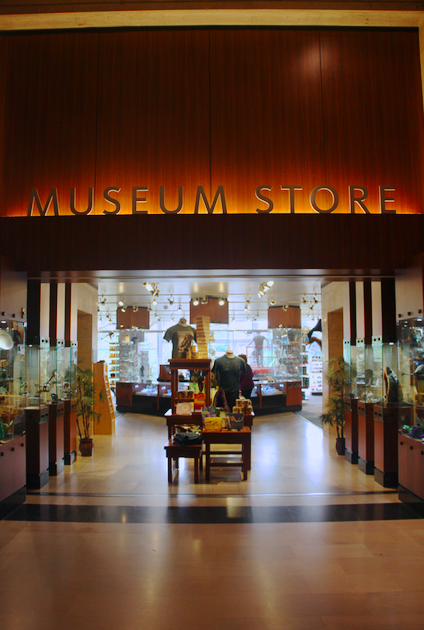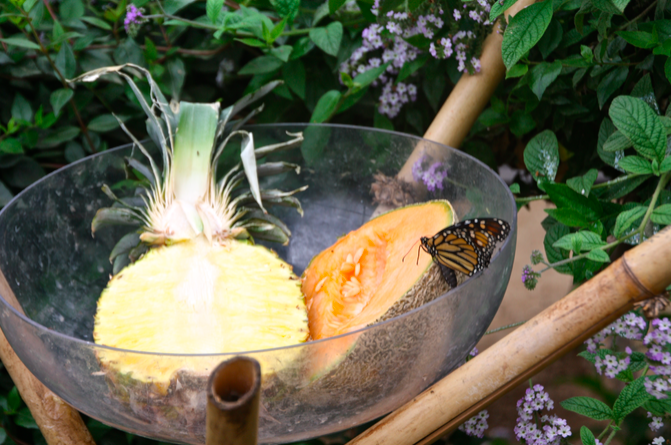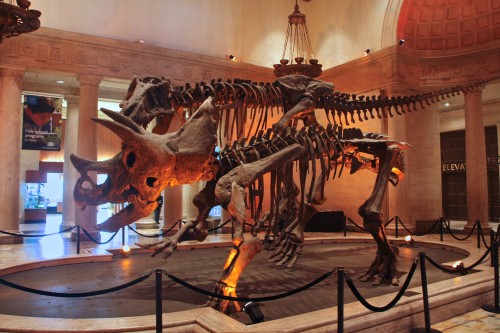 The Natural History Museum holds a vast array of knowledge about plant and animal life from prehistoric to the present day, as well as culture in California and beyond. We invite you to come check it out for yourself: see what the world was like when dinosaurs roamed, pet a polar bear, and find out what makes rats so clever. Parents: the Natural History Museum you may have been familiar with as kids has gone through some changes. A $135 million renovation campaign includes a new cafe, nature spaces and the Otis Booth Pavilion, and the Becoming Los Angeles exhibit. Get ready to make some discoveries about our city and the wider world in a renowned Los Angeles landmark. It’s a place your family will want to return to, again and again. The museum’s website is a great resource in itself.
The Natural History Museum holds a vast array of knowledge about plant and animal life from prehistoric to the present day, as well as culture in California and beyond. We invite you to come check it out for yourself: see what the world was like when dinosaurs roamed, pet a polar bear, and find out what makes rats so clever. Parents: the Natural History Museum you may have been familiar with as kids has gone through some changes. A $135 million renovation campaign includes a new cafe, nature spaces and the Otis Booth Pavilion, and the Becoming Los Angeles exhibit. Get ready to make some discoveries about our city and the wider world in a renowned Los Angeles landmark. It’s a place your family will want to return to, again and again. The museum’s website is a great resource in itself.
1. North American and African Mammal Halls
Start your tour on the first floor with exquisite dioramas of North American and African animals. Located on opposite sides of the floor, these exhibits are a fantastic way for your kids to learn about the wildlife on their own continent, as well as foreign continents. Every animal in these dioramas was prepared by making a mold from the original skeleton and then putting the skin from the real animal over the mold, making them all look extremely life-like.
2. Gem and Mineral Hall
Also on the first floor and just behind the African Mammal hall is the most sparkly exhibit of all. Stepping in to the Gem and Mineral Hall feels almost like stepping in to a jewelry store, except that not all of this “jewelry” has been made into rings or necklaces. While this exhibit has plenty of fascinating aspects, we were especially interested in a case of glowing fluorescent minerals near the back.
3. California History Hall
This exhibit is divided into twelve different sections, starting with the Native Americans. Rather than focusing on wildlife (as most exhibits in the Natural History Museum do) this hall pays attention to how people and cultures changed in California as time went on. Continue your tour on the bottom floor in the California History Hall (and be sure to check out Becoming LA exhibit that tell more of the story of CA’s beginnings).
4. Nature Lab
Once your kids have a good idea about how the state of California came to be, backtrack a few steps and enter the Nature Lab, a beautiful space to learn all about wildlife in Los Angeles. For example, read the story about why a mountain lion tried to cross the 101 freeway, and find out how rats are so good at living in a city – you can even watch live rats crawl around! The Nature Lab is also home to a few very friendly turtles and creepy crawlies who would love you to introduce yourselves (although we understand if bugs aren’t your thing).
5. NHM Grill
If all the learning you’ll be doing works up your appetite, stop at the NHM Grill located right next to the Nature Lab for salads, burgers, or kid-friendly items like hot dogs and mac and cheese. On a particularly sunny Southern California day, we suggest you eat outside and enjoy the view of the gardens.
6. Nature Gardens
Speaking of gardens, head outside once you’ve finished your meal to explore a beautiful arrangement of Los Angeles plant life in the museum’s exquisite new outdoor environs and enjoy elements such as a hummingbird feeder and an Edible Garden that features fruits and veggies.
7. Dinosaur Hall
The Dinosaur Hall is a huge deal at the Natural History Museum—literally. The exhibit is now twice the size it was before the completion of it’s renovation in July 2010, and features ancient giants like 34-foot long Thomas the T. rex. Dinosaur Hall is also home to the world’s only fossil of a pregnant plesiosaur. Plesiosaurs ruled the oceans during the time of the dinosaurs and although they were not technically dinosaurs, they were an important part of the environment at that time. To help your kids really understand the size of these creatures, take them to the second floor of the exhibit where they can compare their own footprint to that of a dinosaur. You can find Dinosaur Hall by leaving the Nature Lab and walking through the Nature Gardens.
8. Discovery Center and Insect Zoo
Head up to the second floor and be welcomed into the interactive Discover Center by a polar bear (hint for parents: this is a great photo opp). Here, kids can learn all kinds of things about a variety of animals, such as sounds made by different frogs and how the skeleton of a saber-toothed cat is assembled. In Insect Zoo, the topics covered will be narrowed down to—you guessed it—insects! This is a great place for younger kids to spend a good hour.
9. Museum Store
A memento from your child’s favorite exhibit will almost certainly be available for purchase at the museum’s well-stocked gift shop. Whether it be a book on creating origami butterflies, an ant farm, or dinosaur print pajamas, the store really does have something for everyone. You’ll find the store by walking straight back from the main entrance, past two large dinosaur skeletons.
10. Butterfly Pavilion
Just outside the main entrance to the museum is a magical place where kids can literally frolic among butterflies. Although there is an additional fee to enter, you and your family won’t regret experiencing this seasonal favorite. Watch and enjoy as butterflies mingle with each other and interact with the surrounding plant life. Keep in mind this is a seasonal feature, so go here for dates and hours
11. BONUS!
You’ll notice during your trip that quite a few signs describe the perks of a museum membership. For very reasonable prices, you and your family will have unlimited free admission to the Natural History Museum, the Page Museum and the La Brea Tar Pits, and the William S. Hartman Museum. More benefits include discounts at the Museum Store, free tickets to the Butterfly Pavilion and Spider Pavilion, and priority tickets to various programs. If you love the museum and your kids are likely to return again, we highly recommend becoming a member. And as mentioned, be sure to check out fun family activities like First Fridays, Dinosaur Encounters, Nature Walks, Behind-the-Scenes Tours, Critter Club, and more!
Past articles about the Natural History Museum

